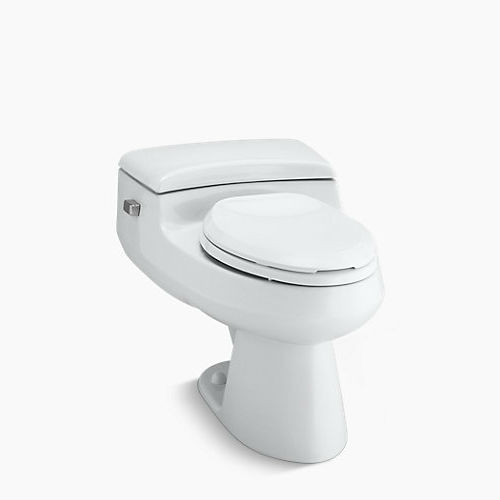You might be thinking about making your home more eco-friendly, and you may be surprised by just how much water you’re wasting with a traditional standard toilet. An eco-friendly option could be the difference between cutting your water usage in half and continuing to waste valuable natural resources. Yet, what is it that makes a toilet eco-friendly? We’re here to show you a few choices that you can turn to.
What Does Eco-Friendly Mean?
This is a term that often gets misused or aimlessly thrown around by influencers and brands. Being eco-friendly can mean different things to each person you ask, but in general, it refers to reducing one’s waste, conserving natural resources, and lessening your impact on the Earth.
When it comes to making a toilet eco-friendly, the primary concern is water usage. Before 1994, toilets were using up to five gallons of water per flush. Considering that today the maximum amount of water per flush is 1.6 gallons, that’s a ton of water. Fortunately, there is a variety of toilets out there that can all be considered eco-friendly, so let’s take a look.
Composting Toilets
Composting toilets don’t use water, but don’t let that deter you! As the name suggests, these toilets use natural compost material to break down waste. Due to governmental regulations, some regions may not approve composting toilets for households. You’re more likely to see a composting toilet in a rural area or an outdoor area such as a campsite.
Low-Flow Toilets
Low-flow toilets use a lot less water than conventional toilets. Even though they use a maximum of 1.6 gallons per flush, low-flow toilets don’t skimp on force or power. Toto is a brand known for their low-flow toilets, so they can be a good starting point if you’re interested in getting this type of fixture for your home.
Double-Flush Toilets
Double-flush toilets take low-flow technology and make it even better. With a double-flush toilet, you can choose between a full or half flush depending on whether you need to get rid of liquid or solid waste. A full flush uses 1.6 gallons of water, while a half flush uses just 0.8. These toilets are less likely to clog, and they’re available from reputable brands such as American Standard and Kohler.
Smart Toilets
Smart toilets refer to models that utilize modern technology to conserve resources and provide more comfort to users. While not all smart toilets will be the most environmentally-friendly option, many of these models can help you save water. In addition to their water-saving capabilities, smart toilets may also have slow-closing lids, heated seats, nightlights, and more.
Why Make the Switch?
If you have an older toilet, you could be using as much a five gallons per flush. For reference, the Energy Policy Act of 1992 requires modern toilets to use no more than 1.6 gallons per flush. If you’ve got a family, then your toilet could be wasting nearly 100 gallons of water each day. Use our flush calculator to see how much water your toilet uses every day.
Not only will making the switch help you cut down on your water usage, but you’ll save money on your water bill. Who wouldn’t want that?
You might be concerned about the price of these eco-friendly toilets, and that’s a fair argument. It’s always a good idea to shop around, but you might want to know the average price for certain models so you can make a more informed buying decision.
A composting toilet typically costs around $1000 or more, but there are more affordable models. For instance, double-flush toilets usually range from $250 to $500 while a low-flow toilet costs a couple of hundred dollars less. Smart toilets are the most expensive of the bunch and can vary greatly depending on how many features and amenities they have.
EPA’s WaterSense Program
If you need help finding the best eco-friendly toilet for your home, consider looking to the EPA’s WaterSense Program. It establishes certain regulations and efficiency standards for appliances so that you can choose your next toilet wisely. Toilets that hold the WaterSense logo use a minimum of 20% less water than the 1.6-gallon models.
The good news is that there are different types of eco-friendly toilets, so your options are open in terms of style, price, and amenities. Knowing about the WaterSense Program can also make it easier for you to spot a great eco-friendly find while you’re out and about.

